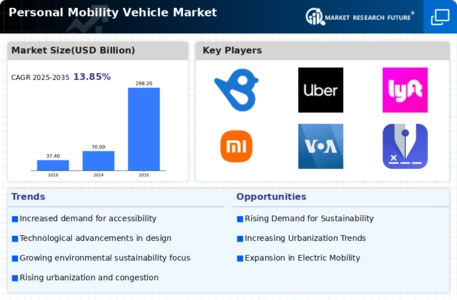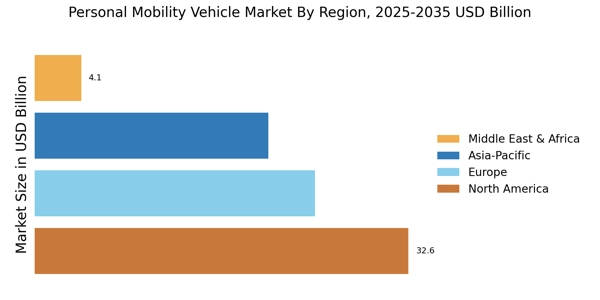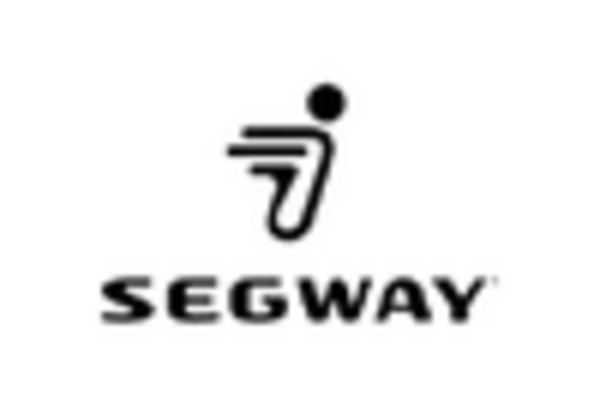The Personal Mobility Vehicle Market is currently characterized by a dynamic competitive landscape, driven by innovation, sustainability, and technological advancements. Key players such as Segway (US), Xiaomi (CN), and Honda (JP) are actively shaping the market through strategic initiatives that emphasize product differentiation and regional expansion. Segway (US) has positioned itself as a leader in electric scooters, focusing on enhancing user experience through smart technology integration. Meanwhile, Xiaomi (CN) leverages its extensive ecosystem of smart devices to create synergies that enhance the functionality of its personal mobility offerings. Honda (JP), traditionally known for its motorcycles, is diversifying its portfolio by investing in electric mobility solutions, indicating a shift towards sustainable transportation options. Collectively, these strategies contribute to a competitive environment that is increasingly focused on innovation and consumer-centric solutions.
In terms of business tactics, companies are localizing manufacturing and optimizing supply chains to enhance efficiency and reduce costs. The market structure appears moderately fragmented, with numerous players vying for market share. However, the influence of major companies like Segway (US) and Xiaomi (CN) is substantial, as they set trends that smaller competitors often follow. This competitive structure fosters an environment where innovation is paramount, and companies must continuously adapt to maintain relevance.
In August 2025, Segway (US) announced the launch of its latest electric scooter model, which features advanced AI capabilities for enhanced safety and navigation. This strategic move not only reinforces Segway's commitment to innovation but also positions the company to capture a larger share of the growing urban mobility segment. The integration of AI technology is likely to attract tech-savvy consumers, thereby enhancing brand loyalty and market penetration.
In September 2025, Xiaomi (CN) unveiled a new line of electric bicycles that seamlessly integrate with its smart home ecosystem. This initiative underscores Xiaomi's strategy of creating a cohesive user experience across its product range, potentially increasing customer retention and cross-selling opportunities. By leveraging its existing customer base, Xiaomi may effectively expand its footprint in the personal mobility sector, capitalizing on the growing demand for eco-friendly transportation solutions.
In October 2025, Honda (JP) revealed its plans to invest in a new manufacturing facility dedicated to electric mobility solutions in Southeast Asia. This strategic decision reflects Honda's commitment to regional expansion and its recognition of the increasing demand for electric vehicles in emerging markets. By establishing a local presence, Honda is likely to enhance its supply chain efficiency and responsiveness to market needs, thereby strengthening its competitive position.
As of October 2025, the Personal Mobility Vehicle Market is witnessing trends that emphasize digitalization, sustainability, and the integration of artificial intelligence. Strategic alliances among key players are becoming increasingly common, as companies seek to pool resources and expertise to drive innovation. The competitive landscape is shifting from a focus on price-based competition to one that prioritizes technological advancements and supply chain reliability. Moving forward, differentiation will likely hinge on the ability to innovate and adapt to changing consumer preferences, as well as the capacity to deliver sustainable and efficient mobility solutions.


















Leave a Comment